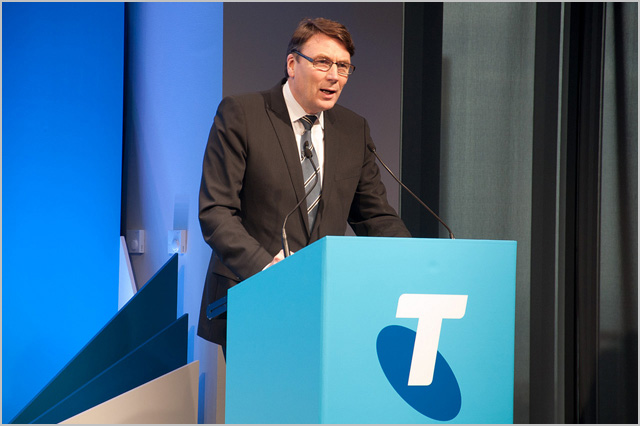news The nation’s biggest telco Telstra this morning confirmed it had signed the wholesale services agreement with the National Broadband Network Company which the industry has been negotiating with NBN Co for the past 15 months, in a move which paves the way for Telstra to finally release its commercial retail NBN prices.
The interim contract will guide how Australia’s retail and wholesale onseller telcos will buy services from NBN Co over the next year, until a more final long-term contract is negotiated. Each telco signs the same standardised agreement with NBN Co.
The contract has been being developed for the past 15 months in consultation with the telecommunications industry, but the negotiations around it have come to a head over the past several weeks, with a number of telcos initially declining to sign a version of the contract until some provisions were modified. Subsequently, Telstra’s major rivals Optus, iiNet and others had also signed the contract, but Telstra had held off.
“I can confirm we have signed the Wholesale Broadband Agreement,” a spokesperson for Telstra said this morning, confirming an initial report by The Australian newspaper.
The move is the latest step in the complex negotiation process being conducted between Telstra, NBN Co and the Australian Competition and Consumer Commission over the terms over which Telstra will gradually migrate its customers onto the NBN infrastructure over the next decade and shut down some of its own infrastructure. All parties involved in the process over the past several years have acknowledged that delays have bedevilled proceedings, but progress continues to be made. Last week Telstra lodged a revised structural separation undertaking document with the ACCC. The document will guide how Telstra will gradually separate its retail and wholesale operations over the next decade.
At the time, the telco’s chief executive David Thodey said the revised document had come after “multiple rounds” of public consultation. Some sections of the industry had complained bitterly about Telstra’s previous SSU, labelling it uncompetitive. However, Thodey said last week that the ACCC had publicly indicated that Telstra had adequately responded to the issues raised. “I am pleased the ACCC has acknowledged that their concerns have been addressed and I note their commitment to consider the SSU promptly,” said Thodey.
ACCC acceptance of Telstra’s SSU document is one of the final conditions left before Telstra’s multi-billion-dollar deal with NBN Co can finally be laid to rest. That action, plus Telstra’s move over the past week to sign NBN Co’s wholesale broadband agreement, means there will be nothing standing in the way for Telstra to launch commercial NBN services, joining its rivals in doing so.
So far the company has conducted a trial of NBN services in locations such as Tasmania; but the company has not yet started charging customers commercial prices to access the growing NBN network, which is increasingly reaching around Australia and will reach hundreds of thousands of premises this year.
Image credit: Telstra


Hmmm, will be interesting to see the take-up numbers from now on…
This will trigger a substantive increase in NBN take-up. Telstra has an advertising budget that dwarves all others. The government may not have sold the NBN well, but Telstra will. They have to. It will become their fixed line bread-and-butter moving forward.
As I am trying to run a business from home, I am acutely aware of the purpose for creating the NBN. To make Australia business and entrepreneurs competitive in a world marketplace. Firstly I live in “the marginal zone” the less than 7% who won’t get NBN cable, so we will get the 4g network wireless solution. We as a small community hope to have a solution to our phone problems soon, in fact we were technically in the less than 3% zone when it came to getting mobile coverage. Beechworth and Stanley, Victoria is in a bush fire zone, we had the 2003 and 2009 fires blazing at our doorsteps, and thanks to all those who were involved in making it so, where we ended up with another TELSTRA tower to help cover the Stanley Plateau. Alas its currently 3G, but of course in time will be upgraded to 4g technology with a potential of 12 Mbps.
We are currently using ADSL 1 (one) via the old copper network, which is so bad it gets voltage cross-charge called “foreign battery” across the lines and is almost unworkable at times until a line discharges. It takes about 15 seconds for a webpage to load these days and its worse now than when we had isdn or even 56k dial up. So the questions this raises is how will the NBN solution be worked for “the marginal zone” where we will have to “upgrade” to an NBN wireless solution, up from our old copper network and will get less speed (than NBN cable) at over 500% more cost than the broken current ADSL1 (one) solution? This does not seem to help to validate the initial NBN purpose of enabling Australian Small Business to take on the world now does it?
Comments are closed.